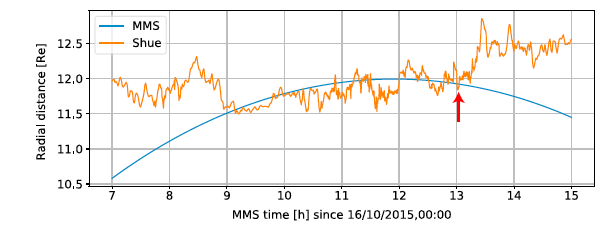Analyzing the magnetopause internal structure: New possibilities offered by MMS tested in a case studys
Rezeau, L., Belmont, G., Manuzzo, R., Aunai, N., Dargent, J. ( 2018). Journal of Geophysical Research: Space Physics, 123, 227– 241. doi : https://doi.org/10.1002/2017JA024526
We explore the structure of the magnetopause using a crossing observed by the Magnetospheric Multiscale (MMS) spacecraft on 16 October 2015. Several methods (minimum variance analysis, BV method, and constant velocity analysis) are first applied to compute the normal to the magnetopause considered as a whole. The different results obtained are not identical, and we show that the whole boundary is not stationary and not planar, so that basic assumptions of these methods are not well satisfied. We then analyze more finely the internal structure for investigating the departures from planarity. Using the basic mathematical definition of what is a one‐dimensional physical problem, we introduce a new single spacecraft method, called LNA (local normal analysis) for determining the varying normal, and we compare the results so obtained with those coming from the multispacecraft minimum directional derivative (MDD) tool developed by Shi et al. (2005). This last method gives the dimensionality of the magnetic variations from multipoint measurements and also allows estimating the direction of the local normal when the variations are locally 1‐D. This study shows that the magnetopause does include approximate one‐dimensional substructures but also two‐ and three‐dimensional structures. It also shows that the dimensionality of the magnetic variations can differ from the variations of other fields so that, at some places, the magnetic field can have a 1‐D structure although all the plasma variations do not verify the properties of a global one‐dimensional problem. A generalization of the MDD tool is proposed.

